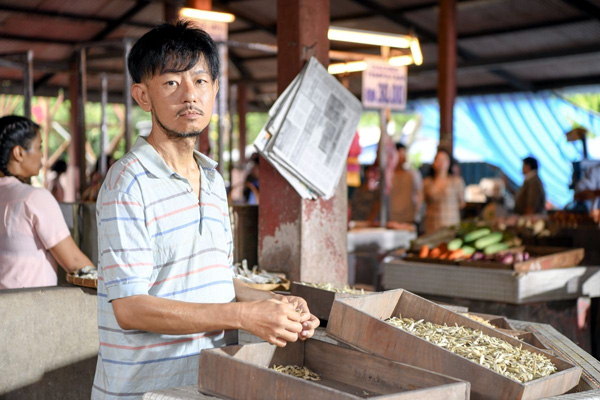An ordinarily domestic way of life suddenly encounters many twists and turns that encompass both challenges and apparitions. Pierre Simon Gutman extrapolates the potential metaphors to be found in how a traditional nation faces up to the challenges of its much larger neighbor in the new reality of today.
Written and directed by first time film maker Keat Aun Chong, The Story of Southern Islet (2020) does not only take place in Malaysia, but is obsessed by its culture, its symbols and, more than that, by its almost metaphysical contradictions. The story seems simple, straightforward, but it is enriched with every twist and turn that is endured by the heroine. It starts with the description of what looks like an ordinary life in the countryside. Cheong, a fisherman, tries to make ends meet, while his wife, Yan, is raising the children. Then, things slowly change. A simple row with the neighbor turns into something worse when this precise neighbor dies in an accident on the road. Yan observes this from afar, detached but worried. Of course, her husband is not directly responsible for the tragedy, but an unspoken suspicion remains. Then, Cheong falls sick, a sickness that none of the doctors seem to even comprehend. The symptoms become increasingly strange and frightening, as Cheong starts coughing nails, and Yan’s convictions, her whole vision of what the world is supposed to be, collapses. Since no ordinary medicine can cure Cheong, she finally, reluctantly, turns slowly to something else: the shamans, the magic, and is forced to rediscover forgotten things about herself, her identity, and her surroundings.
By opening the movie with a representation of Malaysia’s traditional Kedah Wayang Kulit puppetry theatre, the director shows a clear purpose. His story will be filled with references to Malaysia’s traditional culture, but it becomes quickly obvious that the concept of culture must be taken here broadly. The Story of Southern Islet sees the road taken by its heroine, in search of a cure for her husband, as a clear inner quest. To restore Cheong’s health, Yan will have to change something deep within herself, within her beliefs. The themes are laid out clearly in the first half of the picture. Yan does not share her husband’s faith, and so refuses to turn to the supernatural solutions linked to this faith. Her rationality must prevail. It becomes apparent in the second half of the movie that this question is only a vehicle for something larger. Yan was raised far from the countryside, her rejection of the supernatural, of the tradition Cheong wants to believe in, merges with ethnic considerations, with deep differences between the spouses, with Yan’s sense of unease about everything around her, with differences between Chinese and Malaysian identities. Yan’s journey mirrors a form of cultural war, for a small country trying stay true to its roots while facing the growing cultural dominance of China. What Yan is finding is also a kind of peace with the place she chose to live in, with its specificities and even its ghosts.
The supernatural elements of the script push The Story of Southern Islet close to becoming a ghost story, even the horror, and the director does not shy away from this challenge. Some scenes, like the disturbing meeting between the mother and her dead son, carry a brooding, unreal but frightening quality. The ghosts are here, but Chong shoots them from the point of view of the culture he is trying to depict. Apparitions are not staged; they do not jump from the screen. They are just here, beneath the surface, waiting and deeply entrenched in the world shown by the movie, just like when the heroine, after accepting this new reality she avoided for so long, finds herself on a boat with behind her, pale as a corpse and silent, the spirit that was probably tormenting her husband. This strange and unsettling figure is shown without any of the scary effects or tricks used by so many film makers. This is because, for Chong, and for Yan at the end of the movie, the supernatural is ultimately just a part of the world, as important and, in its own way, as real as the trees or the water. These visions, which merge a quiet horror with a sense of poetry, give a strong visual identity to the picture, as well as its meanings. Yan must learn to live with these creatures, with this world, and the spectator follows this revelation step by step, discovering with her this new reality, rich but also destabilizing. The Story of Southern Islet, like any good movie, finds here a perfect balance between its form and its content, proof of a new filmmaker that could soon become an important voice.
Pierre Simon Gutman
© FIPRESCI 2021
Edited by Steven Yates

